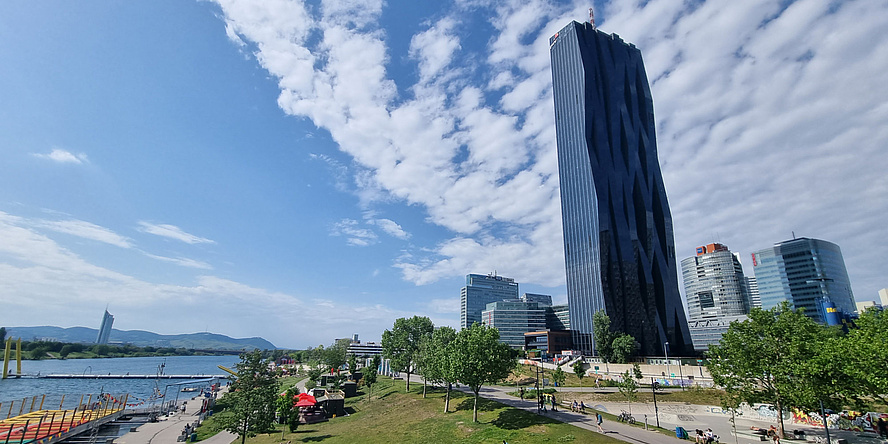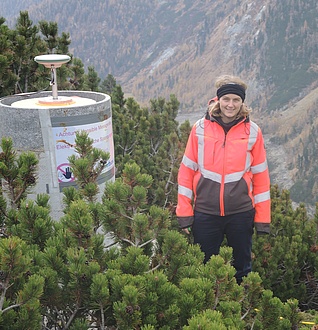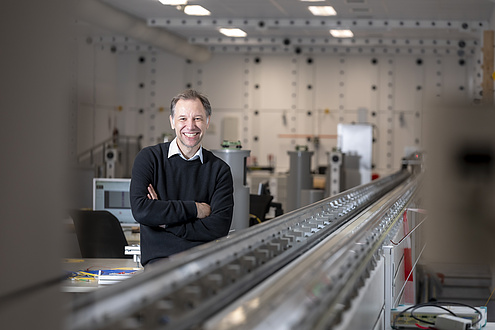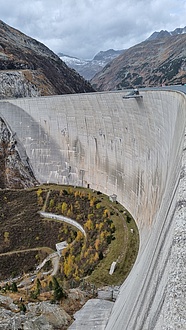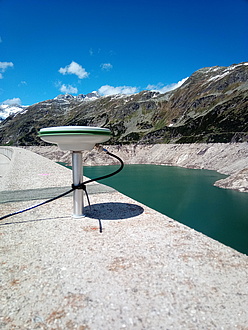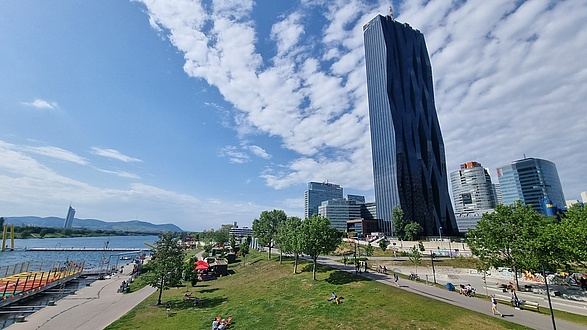From the outside, the Kölnbrein water dam, operated by Verbund in Carinthia, which is Austria’s highest dam, and the DC Tower in Vienna, Austria’s tallest building, do not have much in common, but for a research group around Caroline Schönberger and Werner Lienhart from the Institute of Engineering Geodesy and Measurement Systems at Graz University of Technology (TU Graz), they are equally interesting from a scientific point of view. By taking measurements on these two structures, the team was able to develop a satellite-based method for the static and dynamic monitoring of critical infrastructure as part of the InfraHealth project.
This makes it possible to track not only slow deformations using static measurements, for example, due to changes in the reservoir level of a dam. Dynamic measurements can also be used to record building vibrations and detect damage or other critical changes based on deviations. Until now, different methods had to be used for static and dynamic measurements. The new method also enables continuous monitoring even in rain, snow, fog or high winds.
Unparalleled accuracy
“The high level of accuracy that we were able to achieve with the measurements in the FFG-funded InfraHealth project is almost unique,” says project manager Caroline Schönberger from the Institute of Engineering Geodesy and Measurement Systems at TU Graz. “We can detect vibrations in the millimetre range or even smaller with satellites that are around 20,000 kilometres away from us. This project paves the way for the large-scale use of global navigation satellite systems (GNSS) for static and dynamic monitoring of critical infrastructure and thus for ongoing monitoring of its safety, independent of environmental influences. This benefits not only building operators, but also their users.”
This new measurement method uses local antennas and the publicly accessible GNSS signals from the Galileo, GPS and GLONASS satellites. The antennas are attached to the relevant measuring points on the structure, while another, so-called reference antenna is located relatively close by on stable ground. The antennas determine their position by means of the satellites for the dynamic measurement every 0.05 seconds, a frequency of 20 Hertz. Here, GPS and Galileo signals have proven to be useful, as they enable the antennas to record their position more reliably. The researchers use this recorded raw data to calculate the frequency response of the structure.
Planning with virtual reality
Static measurements are not as time crucial, as the measurement evaluation has a fixed interval that is always longer than one second; it can also be one hour or one day. Here, the combination of all three GNSS systems produced the best results, with GLONASS being added to Galileo and GPS.
In order to ensure that the antennas have contact with the satellites at the measuring points intended for them in advance, the research team developed a tool that allowed them to carry out the entire planning in virtual reality. At the Kölnbrein dam, the team established beforehand that not only the two antennas in the centre and halfway to the edge of the dam can receive sufficient satellite signals, but also those at the very edge. The transition to solid terrain is particularly important when monitoring dams.
Earthquake measured 550 kilometres away
Instead of six antennas, the team mounted only two antennas at the DC Tower: one to measure the building’s frequency and one to check whether the building also moves due to external influences such as wind. The tests there showed how accurately the new method can detect changes. During the series of measurements, the researchers were able to record the shockwaves of an earthquake around 550 kilometres away in northern Italy based on the movements of the tower. The earthquake with a magnitude of 5.7 on the Richter scale occurred on 9 November 2022 at 7:07 a.m. CET near the Adriatic coast northwest of Ancona. Earthquake waves propagate at around 3 kilometres per second, so in three minutes they travel around 540 kilometres and at 7:10 a.m. there was a corresponding amplitude at the DC Tower.
Werner Lienhart, head of the Institute of Engineering Geodesy and Measurement Systems at TU Graz, adds: “The combination of static and dynamic monitoring of infrastructure in one measurement system makes it possible to gain an in-depth understanding of the current state of health of a structure. This is particularly important for large engineering structures such as bridges or dams that are approaching the end of their planned service life.”
Partners of TU Graz in the InfraHealth project were: Verbund Hydro Power GmbH, Leica Geosystems Austria GmbH, Disaster Competence Network Austria, pentamap GmbH.
This research area is anchored in the Field of Expertise “Information, Communication & Computing”, one of five strategic foci of TU Graz.
Would you like to receive the latest stories, news, research stories, interviews or blog posts from TU Graz directly on your smartphone or in your email inbox? Subscribe to the TU Graz Telegram newsletter free of charge.
